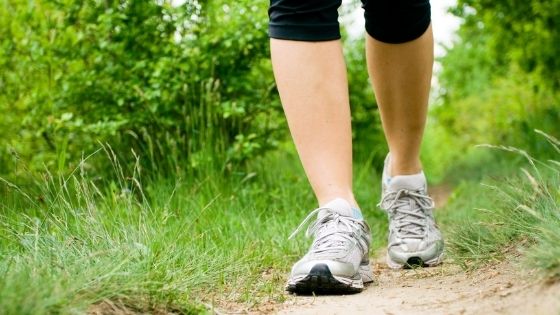How Much Exercise per Week? 10 Simple Exercises to Achieve Your Goal!

Do you know how much exercise per week is enough? The Centers for Disease Control and Prevention (CDC) recommend that adults get 150 minutes of moderate-intensity aerobic activity or 75 minutes of intensity-vigorous aerobic activity per week. You can achieve this by doing 30 minutes on five days or 20 minutes on six days.
Every one of us needs to be physically active. But, if you're not sure where to start, try these 10 easy exercises that will help you meet your weekly goal in no time! As a result, you'll feel better about yourself and have more energy to do the things you love. Plus, it's never too late to start exercising, even if it's just a few times a week!
What is the recommended amount of exercise per week?
In terms of exercise, most Americans are not getting enough. The CDC reported that only 20-30% of adults in America get the recommended amount of weekly physical activity for good health. That amount is about 2.5 hours of moderate-intensity exercise per week, or 1 hour and 15 minutes of vigorous-intensity exercise.
The World Health Organization (WHO) said adults should get 150 to 300 minutes a week of moderate-to-vigorous physical activity, including older people or those with chronic conditions.
How much physical activity do children need? Children should spend an hour each day in activities such as running around the yard or playing soccer after school.
There has been some debate as to what the right amount of exercise for fitness is. The recommendations from organizations such as ACSM, JCAHO, ACE, etc., vary, often based on their target population. For example, the ACSM recommends that healthy adults perform 150 minutes of moderate-intensity exercise per week, while the JCAHO suggests 75-90 minutes of moderate-intensity activity per week for healthy adults.
What about energy expenditure?
Many people use quantitative models of energy expenditure to try to determine an optimal amount of weekly exercise. For example, Klempel et al. (2009) used a previously published energy expenditure model to determine the optimal weekly exercise for the "average" person to expend in terms of calories per week.
So what does that mean? If you perform 2,000 kcal/week worth of exercise, you'll expend 7.5 lbs of fat per year. Even if you perform twice that amount of exercise, you'll only expend 15 lbs of fat per year? Does this make sense? In terms of performance or weight loss, I don't see how it does. But maybe we're not thinking about the numbers correctly.
Objectively, we all know that more physical activity means a higher energy cost. There's no question about that. However, the problem is what exactly does "more physical activity" mean? More time at the gym? More miles of running? With all this extra time spent exercising, are you really going to be able to maintain a significant caloric deficit and lose weight?
Let's take an average person who has a sedentary job. Let's say that they exercise for 2,000 kcal/week, which is the number Klempel et al. (2009) suggest as an optimal amount of weekly exercise. If we wanted to maintain a 500 calorie deficit and lose weight by increasing this person's weekly physical activity, what would their numbers look like?
I'm not going to bore you with the details, but with 3.5 hours of moderate-intensity exercise per week, this person would expend 6,600 calories/week. So, if we wanted them to lose weight by increasing their weekly physical activity, they would need to do a minimum of 2.9 hours of moderate-intensity exercise per week at 1,200 calories per hour (2,000/3.5 hours). That's a lot of work!
10 Easy exercises that will impact your body

No one can deny that exercise benefits your health. The Department of Health and Human Services recommends 150 minutes a week for a moderate aerobic activity or 75 minutes vigorous each week, with the option to mix them up if you prefer (although it’s best not to go too hard in either direction).
The guidelines recommend spacing this out during the course of a week, which will help avoid overdoing it!
The recommended amount of exercise a week is not as important as the quality of exercise. So instead of scrolling mindlessly through your social media feeds, take up a sport or go for a hike.
Would you mind doing whatever you can to get outside and enjoy the innumerable benefits that come with it? If you're looking for inspiration, here's a list of easy exercises that will have a noticeable impact on your body.
Walk
Walking is one of the simplest forms of exercise, but it will profoundly affect your body. It's also an exercise you can do anywhere, in any climate, regardless of age or ability.
Walking improves circulation and boosts heart health, burning 150-200 calories per hour. You can even squeeze in a mini-workout with interval training.
Brisk walking is a vigorous-intensity activity with many health benefits, so try to do it twice a week.
Dance
One of the most intense forms of exercise, but fun too. It can be a vigorous-intensity aerobic activity. For example, try to dance for 60-90 minutes 3 times a week. With dancing, you work for all major muscle groups.
It will make you feel better and lose weight without putting you under pressure. Plus, the calorie-burning is up to 600 calories per hour! So if you want to burn fatter and a little bit more intensity to your moves.
Cycling
Cycling is great for endurance training and weight loss. While running can damage your joints, cycling helps build strong bones, keeping you fit as you get older. A 30-minute cycle burns approximately 280 calories. If you have time to spare, go for a long bike ride or invest in an exercise bike for your home.
Cycling is great exercise and can be done in several ways. Choose the most suitable option for you, depending on available time and equipment. It provides an excellent cardio workout and burns calories rapidly.
Swimming
Swimming is a low-impact form of cardiovascular exercise that's great at strengthening your heart and lungs. You'll burn approximately 400 calories in a 30-minute session. One of the best things about swimming is that your body will look natural and toned, unlike other high-impact forms of exercise.
Squats
Squats are an effective way to strengthen your glutes and hamstrings without having to use a gym. In addition, squats are an excellent exercise for weight loss as they help you burn more calories throughout the day, even when you're not active!
You'll use different muscles when squatting than when standing or sitting. To perform squats three times a week to burn fat effectively.
Push-ups
If you're looking for an intense upper body workout using your own body weight, push-ups will be right up your street!
Perform 3 sets of 10-15 each workout session. It's also worth varying the types of push-ups you do throughout the month to target different muscle groups. For example, try doing regular push-ups, wide grip push-ups, and tricep push-ups.
Sit-ups
If you're looking to strengthen your abdominal muscles, sit-up exercises are a great addition to your workout routine. You can perform them at home or office with no special equipment needed! Try doing three sets of 10-15 each time you train.
Try doing one minute of ab exercises at the end of each workout. It's a great way to cool down and relax after performing some intense exercise!
Glute bridge
This is another simple exercise you can perform at home or office, using no special equipment. Lie flat on your back with your knees bent, slowly raise your hips until your body forms a straight line from the top of your hips to the shoulder.
You can also vary the exercise by lying on your front and performing hip thrusts.
Play with the dog
Playing fetch with your dog is a great way to get some exercise. You'll be surprised at how many calories you can burn while playing fetch!
Try doing this for 15 minutes 3 times a week. Your dog will thank you for it, too 😃
Jumping rope

This is one of the most useful pieces of equipment you can buy. It's also one of the cheapest too!
Jumping rope will help strengthen your muscles, especially your calves, quads, and hamstrings. In addition, rope jumping is a great way to burn calories fast as it works out both your upper body and lower body at once.
Try jumping for 15 minutes 3 times a week.
The bottom line is that you do not need hours a day in the gym to get fit and healthy. Fitness should, at least partly, be fun. And if you're not having fun, don't be afraid to try something different.
Ways to make sure you're getting enough activity throughout the day
- Be active in all aspects of your life. Try to be active at work, walking the dog, and even when driving (practice mindful driving by paying attention more on the road than relying on GPS)
- Push yourself physically. Focus on pushing yourself physically, whether it's squats or push-ups, sprinting or parkour
- Take up a new sport.
- Use the stairs instead of elevators whenever possible. You'll burn an average of 15 calories per flight, and you can easily rack up to 1,000 steps in a day using the stairs.
- Find time for playful activities. Try activities like taking your dog on long walks and playing ball.
- Try getting off the couch and doing some housework. Of course, you don't need to do this every day, but taking on those extra chores will not only keep your house clean, but it will also give you a good workout in the process.
This is just a small list of ways to stay active every day, so make sure to explore your options and find out what works for you.
Conclusion
Everyone has a different idea of what is the right amount of exercise per week. However, to improve your health and fitness level, you need to have an exercise plan including some vigorous activity.
It might be hard to find a plan that fits everything in your life. But you do not need to give up.
You should also be mindful about finding activities that make you happy! If this sounds daunting, then let our team help with creating something tailored just for you!
Medically reviewed and approved by Nataniel Josue Alvarez M.D.
